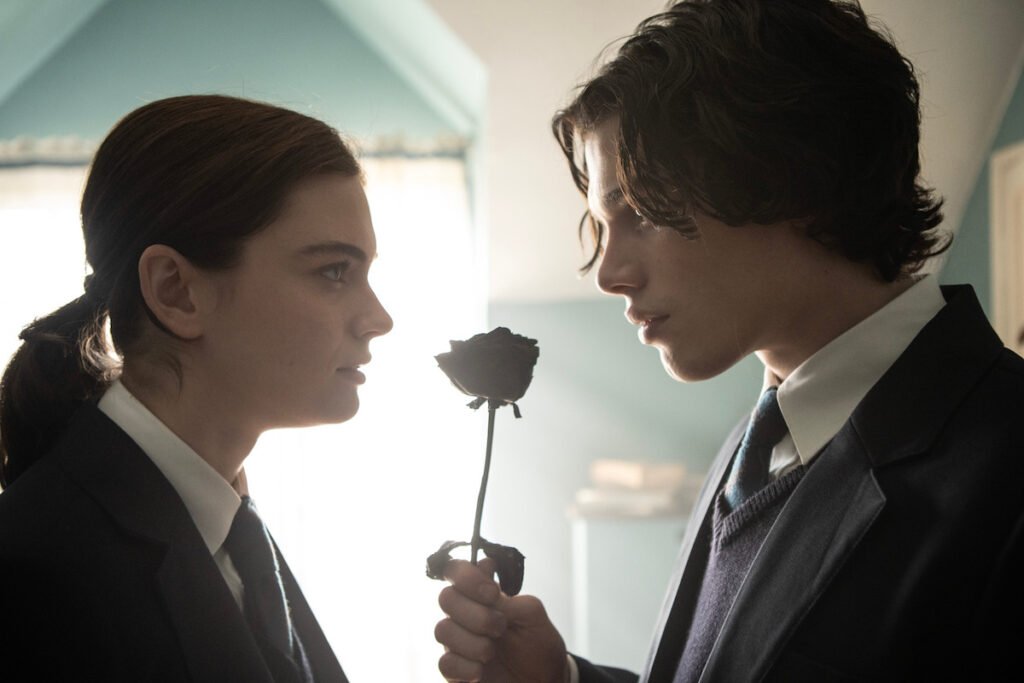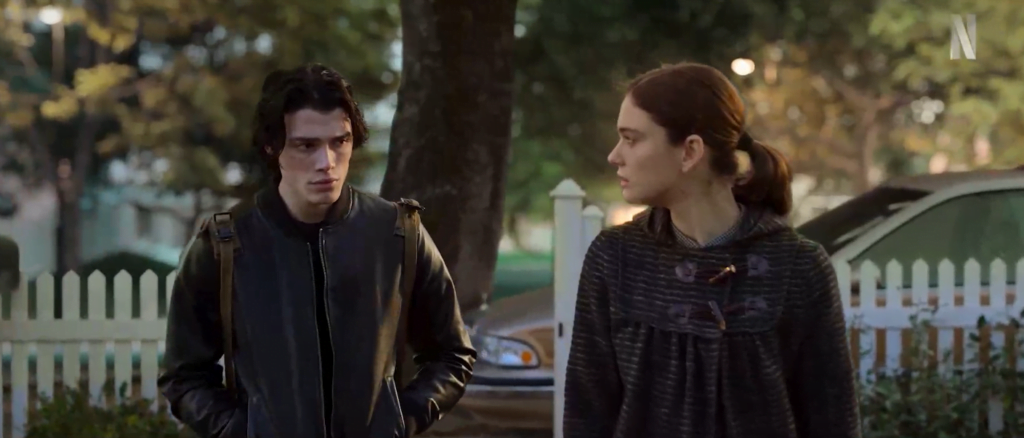Spoiler Ahead!
If you desire to witness a brooding romance blended with umpteen romantic tropes and a cliched journey of a girl with a traumatic past falling in love with a lone wolf, The Tearsmith on Netflix is the perfect pick for it. Based on Erin Doom’s best-selling book of the same name from 2021, The Tearsmith tells the story of Nica (Caterina Ferioli), an adolescent orphan who is adopted by two kindhearted people who have also taken in her sworn enemy Rigel (Simone Baldasseroni).
If she is constantly reminded of the trauma she experienced in the orphanage, how will she manage? The film on Netflix is visually stunning, but the story of the enemies-turned-lovers and the frequent longing looks from the side are enough to turn off most viewers.
What is The Tearsmith about?
Nica, a young girl, becomes an orphan after her parents die in a car accident. She is taken to the Sunnycreek Orphanage where she befriends another girl named Adeline. Eventually, Nica is adopted by Anna and Norman Milligan, along with another teenager named Rigel. Rigel, who was the favourite of the headmistress at the orphanage, Margaret, is unfriendly towards Nica.

Flashbacks show that Margaret abused all the children at the orphanage except for Rigel. Rigel and another student get into a fight on the first day of school. During Garden Day, students give roses to each other anonymously. Nica receives a black rose, symbolising a troubled and intense love, but Rigel denies giving it to her. Lionel asks Nica out, but Rigel ends up getting into a physical fight with him. Nica reprimands Rigel and then takes care of him when he has a seizure.
During this time, they have a romantic moment. In a flashback, it is revealed that Rigel once intentionally injured himself to divert punishment away from Nica. Adeline asks Nica for her testimony to press charges against Margaret, but Nica refuses due to her past. Later, Nica and Rigel are interrupted by Lionel, who disapproves of their potential relationship. Rigel decides he is not good enough for Nica and rejects their adoption, leaving the home. During the school dance, Lionel tries to sexually assault Nica but Rigel stops him. Nica and Rigel then engage in intimate activities in a classroom. Later, Lionel, filled with anger, tries to harm them by driving his car towards them on a bridge
However, they manage to escape by jumping into the river below. Nica regains consciousness in the hospital and finds out that Rigel, who cushioned her fall, is in a coma due to his existing brain neuromas. Margaret has taken custody of him after he refused the Milligans’ adoption offer. Margaret holds Nica responsible for Rigel’s coma and threatens to keep them apart indefinitely. Nica, now rebellious, eventually agrees to testify against Margaret. Nica informs Rigel in the hospital that they have won the case, ensuring Margaret can no longer harm them. Eventually, Rigel awakens from his coma. In the years that follow, Nica and Rigel enjoy a blissful marriage and become parents to a daughter.
A love story that is cliched and unimaginative
The Tearsmith centres on Nica (Caterina Ferioli), an adolescent orphan taken in by two charitable individuals. But there is one issue. Her fellow orphan and sworn enemy, the glum, tortured, pouty, and incredibly attractive Rigel (Simone Baldasseroni), was also adopted by the same family. Can the two ever put their differences behind them? Time will tell.

The Tearsmith lives up to expectations in every way. The majority of the film adaptation’s first half is devoted to sequences in which Nica and Rigel express their distaste for his new “sister“; these scenes are remarkably similar to one another and will surely leave you wondering, “How many times can two people almost kiss?“
The flashbacks show how the orphanage affected the two main characters and their lives improved after being adopted. Rigel is a brooding artist with good looks and a captivating expression, while Nica is a gentle and sensitive individual in search of love. They can be compared to European versions of Edward Cullen and a more expressive Bella from Twilight. The actors perform adequately, creating suspense about their potential relationship.
The dynamic between the characters, where they go from enemies to pretending to be siblings to being in a romantic relationship, came across as creepy and confusing. The chemistry between them can be attractive at times, but Nica’s reactions to Rigel’s advances made it unclear if they were consensual or if she felt threatened. It’s contradictory for Rigel to make advances while Nica thinks he wants her to dislike him. This traumatising bond feels inadvertent.
Forced inclusion of romantic tropes
The Tearsmith is a film that combines all the common young-adult romance tropes. Although the writers try to make the film appealing with the presence of the cliche teen romances with attractive male leads and a transformation of an unattractive girl. Yet the scene which tries to show romantic tension feels unbelievable and displays the physical interaction to be awkward. Adding to the weirdness of the film, the characters frequently leave doors open.
Moreover, The Tearsmith‘s lack of surprises makes it uninteresting. Early in the film, a love triangle intrudes itself into the narrative, and it doesn’t even remotely pique your interest in how it will end. In any case, it makes a will-they-won’t-they plotline more predictable. Despite being an enemies-to-lovers plot, it falls short of the most common romantic story arcs.
Good cinematography, poor dialogues
As Nica, Ferioli is believable and executes a challenging role that primarily entails responding to Rigel’s capricious behaviour. Similar to Baldasseroni, who extravagantly plays Rigel, The Tearsmith‘s fantastical gothic aesthetic and strikingly blue colour correction reinforce the parallel between the two actors. Baldasseroni serves up a grandiose and melancholic version of Italian Edward Cullen. Furthermore, The Tearsmith’s appearance is deserving of praise far more than its story.

However, there is much to be desired in the dialogue and script. It tries too hard to be poetic and romantic, especially for these deplorable teens, but it’s basic and monotonous. The dialogues in “The Tearsmith” seem to lack imagination due to Nica and Rigel’s subtle adjustments to the haughtily pretentious inner monologues of the main protagonists and their exchanges.
The Tearsmith is a completely disorienting, tedious chaos of a film. This film has elements that genuinely ought to succeed. And they might have if they had been more cautious. With no reclaiming qualities, however, all that can be hoped for is that these enthusiastic teenage actors will be given more opportunities to work on projects that are worth their time.





